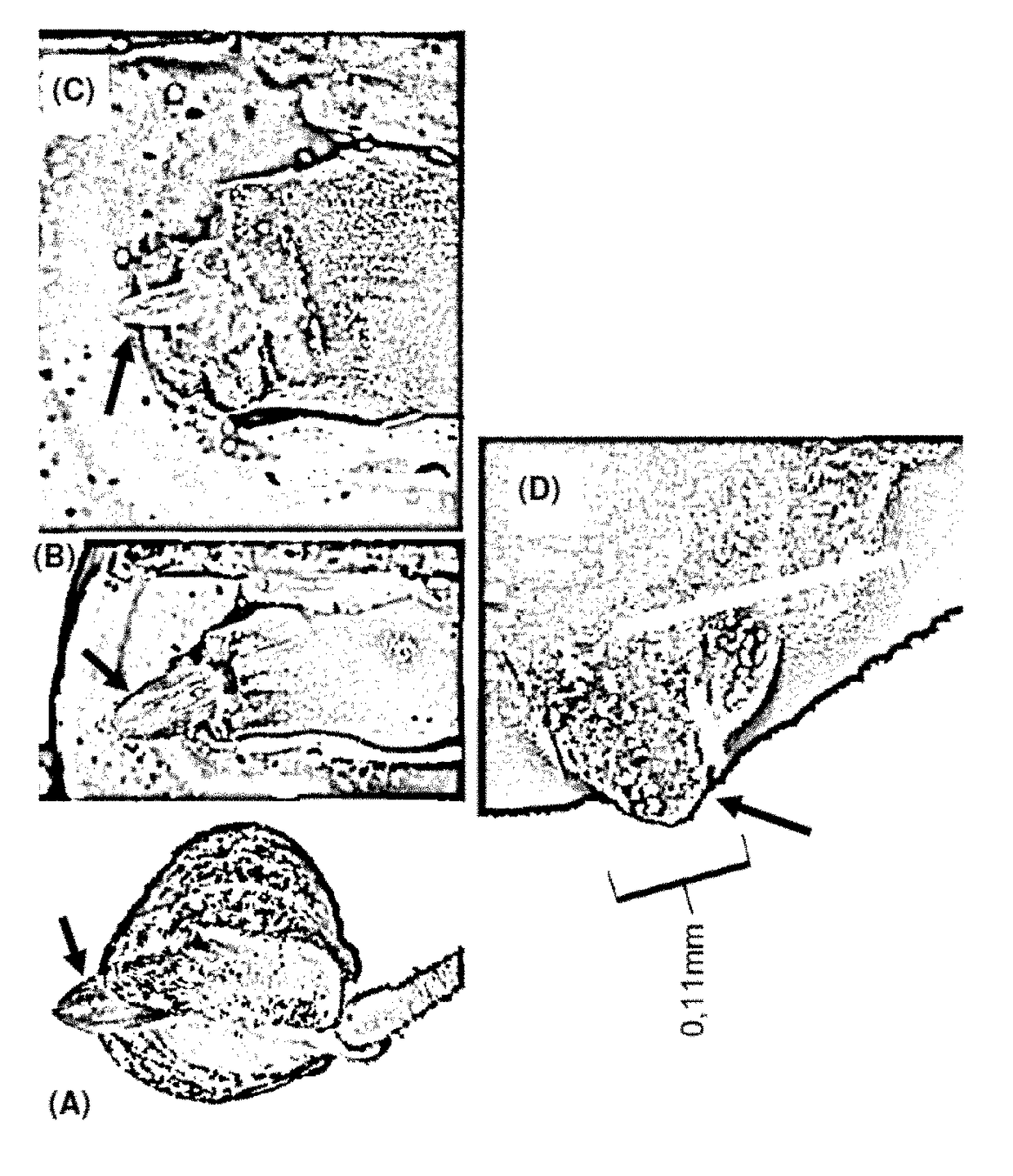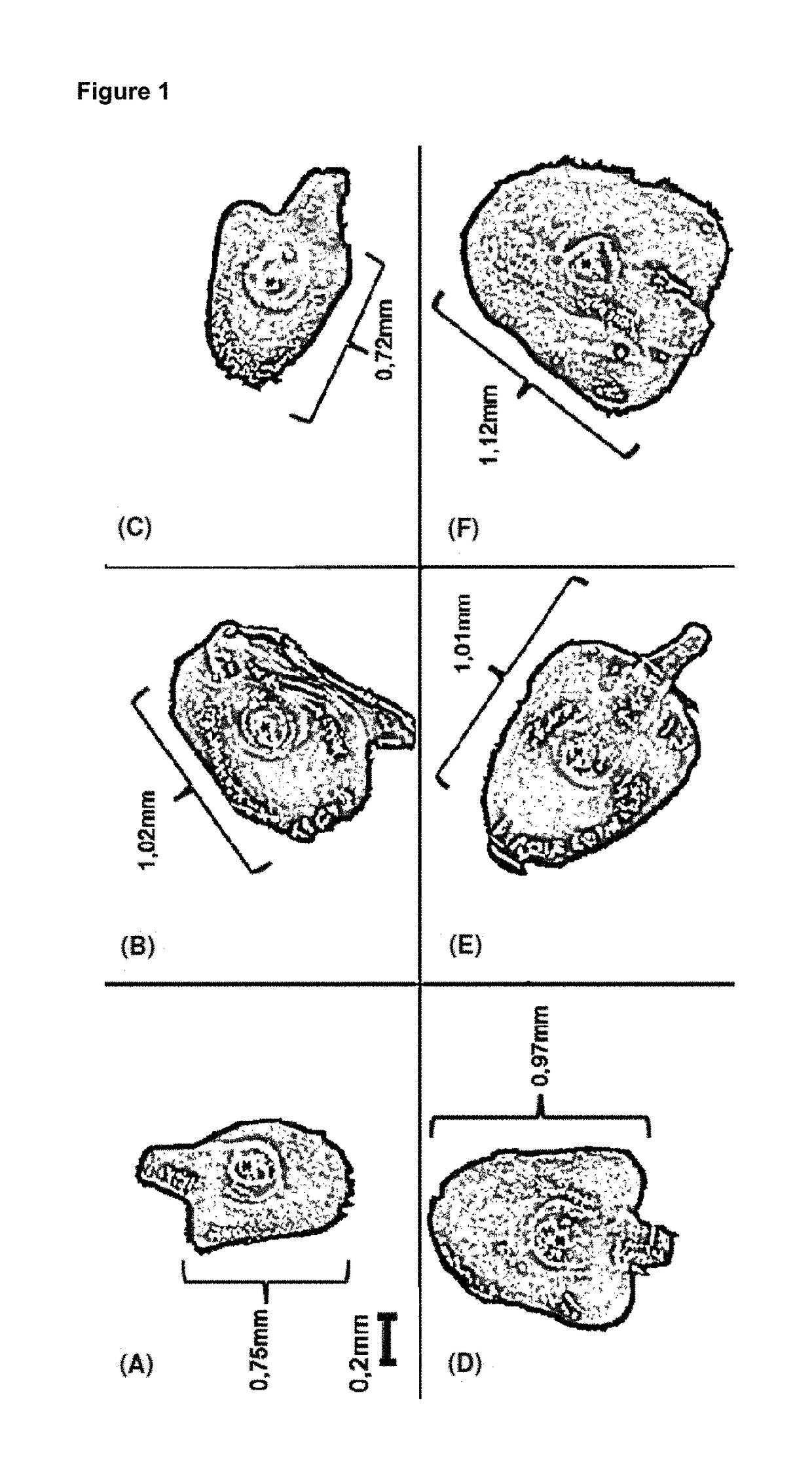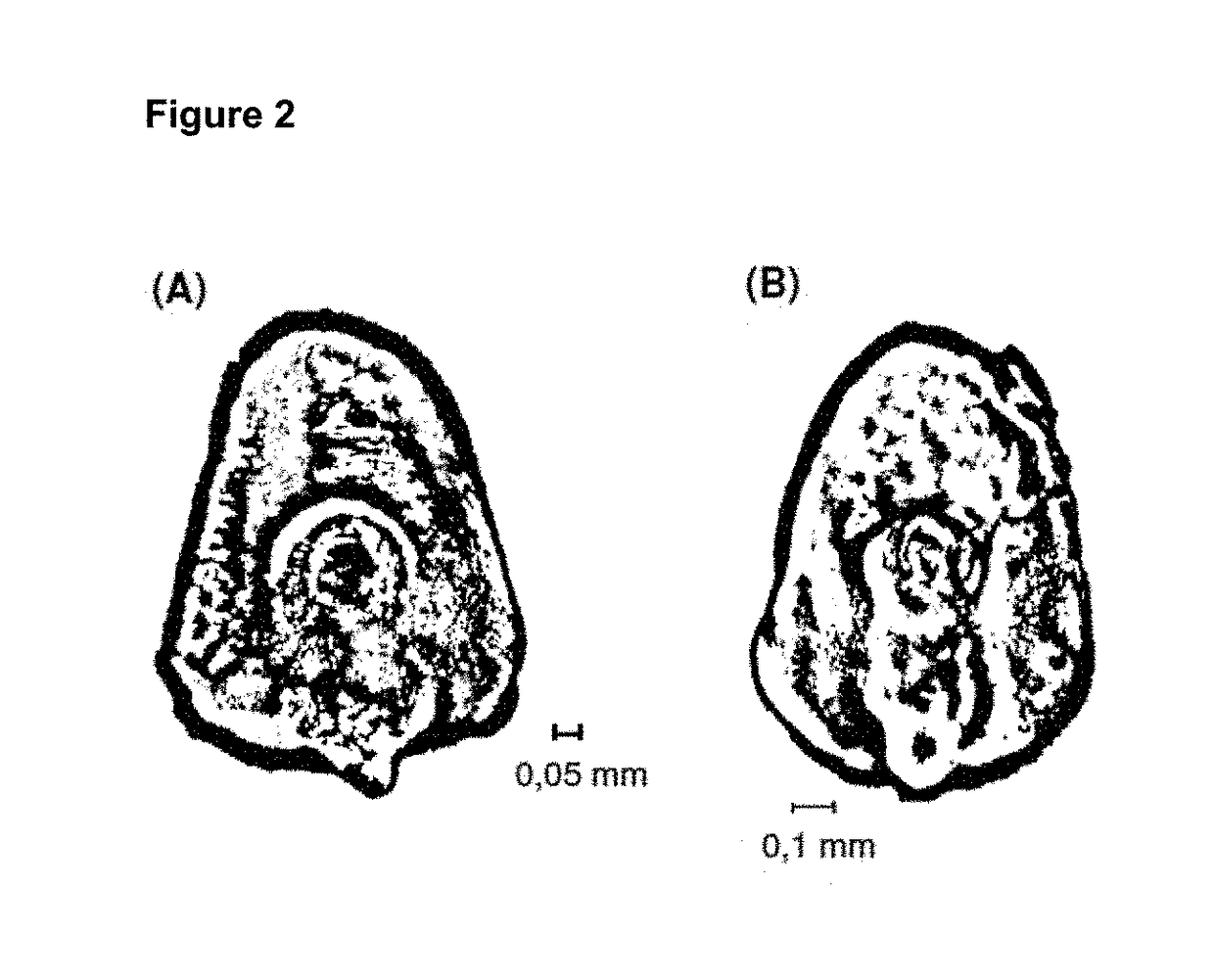Methods and hybrids for targeted nucleic acid editing in plants
a nucleic acid editing and hybrid technology, applied in the field of methods and hybrids for targeted nucleic acid editing in plants, can solve the problems of low efficiency, huge challenge in the modification of complex eukaryotic genomes, and cannot allow the direct extraction of plants or plant materials containing the desired dna modification, so as to broaden the application field of crispr/cas technology
- Summary
- Abstract
- Description
- Claims
- Application Information
AI Technical Summary
Benefits of technology
Problems solved by technology
Method used
Image
Examples
example 1
n of CRISPR / Cas Constructs
[0258]The constructs were produced on the basis of the publication by Mali et al, 2013. The promoters were specifically used against specific plant promoters and adapted to the gRNA of the respective target genes.
Constructs for Monocotyledonous Plants:
[0259]The promoters used were, inter alia, the maize-Ubi-Intron promoter (SEQ ID NO:7), the maize U3 promoter (SEQ ID NO:10), the wheat U6 promoter (SEQ ID NO:8), the rice U3 promoter (SEQ ID NO: 9) and the Brachipodium EF1 promoter (SEQ ID NO: 40). An exemplary construct had SEQ ID NO: 23 (vector1_TaU6 standard).
Constructs for Dicotyledonous Plants:
[0260]Here, a parsley-Ubi4 (SEQ ID NO:5) and an Arabidopsis U6 promoter (SEQ ID NO:6) were used. An exemplary construct had SEQ ID NO:24 (Vector 1_ZmU3 standard).
[0261]The various gRNAs were determined specifically for the respective target genes and cloned into the corresponding position in the vectors mentioned above. The position of the gRNA sequence corresponde...
example 2
ion of CRISPR / Cas Constructs
[0275]The constructs described above in Example 1 were introduced into the meristems using various methods. The basis for this was accessibility to the meristems; the material used determined the various methods used (see Example 4).
[0276]The following methods were employed:[0277]Particle bombardment:
[0278]Particle bombardment can be used in all of the meristems employed. Bombardment was carried out with dsplasmid DNA, linear dsDNA, RNA and protein as well as virus particles. For instances, Gold and tungsten could be used as the carrier material. Test bombardments of embryo meristems (FIG. 5) and tassel meristems (FIG. 7) were carried out with the aid of the red fluorescing protein; it was shown that it was possible to introduce DNA into these cells by particle bombardment. The important thing to observe thereby is that the suitable bombardment settings were used, depending on the respective materials. Thus, a higher bombardment may lead to an increased t...
example 3
Meristematic Transformation of Maize Seedlings and / or Embryos / Inventive Treatment of Meristem Tissue
[0285]Accessibility to the meristem in the individual stages varies widely. Thus, in the embryo (FIGS. 1 and 2), the meristem is relatively easily accessible, provided that embryos of the right size are used. What is important is that the deeper-located cells of the meristem are transformed, since the upper cells have already undergone a certain amount of differentiation and are no longer suitable. FIGS. 10 and 11 show two views of a maize embryo, as well as the locations of meristematic tissue, indicated by stars. Initially, these data were made visible through a fluorescent marker. It is clear from this that the targeting of plant meristematic cells and tissue is made possible through the provision of the novel method. As a result, a novel method is obtained for inserting nucleic acid structures, e.g. vectors, as well as, in particular, RNAs and amino acids, into a plant target cell...
PUM
| Property | Measurement | Unit |
|---|---|---|
| pH | aaaaa | aaaaa |
| pH | aaaaa | aaaaa |
| pH | aaaaa | aaaaa |
Abstract
Description
Claims
Application Information
 Login to View More
Login to View More - R&D
- Intellectual Property
- Life Sciences
- Materials
- Tech Scout
- Unparalleled Data Quality
- Higher Quality Content
- 60% Fewer Hallucinations
Browse by: Latest US Patents, China's latest patents, Technical Efficacy Thesaurus, Application Domain, Technology Topic, Popular Technical Reports.
© 2025 PatSnap. All rights reserved.Legal|Privacy policy|Modern Slavery Act Transparency Statement|Sitemap|About US| Contact US: help@patsnap.com



